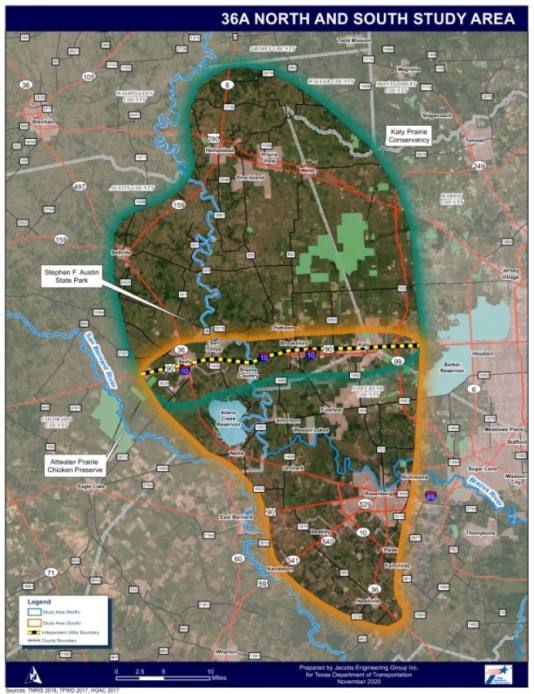TxDOT, advocacy group look at feasibility of Hwy. 36A corridor through Brazoria, Fort Bend, Waller counties

21 May 2021
By: Haley Morrison - Community Impact
The Texas Department of Transportation is in the midst of the feasibility study and environmental study for the Hwy. 36A project. If it comes to fruition, the project would build 65 miles of Hwy. 36A, creating a corridor from Port Freeport to Brazosport to North Texas, Highway 36A Coalition spokesperson Jim Fredricks said.
The project is separated into two sections: Hwy. 36A South would run from the existing Hwy. 36 south to the I-10 and Hwy. 90A intersection. Hwy. 36A would run from the I-10 and Hwy. 90A intersection to Hwy. 6 north of Hempstead. The road would be a four-lane divided road and would look similar to the expanded, existing Hwy. 36, Fredricks said. The existing Hwy. 36 is under construction; the road runs from Freeport to Hwy. 90A in Rosenberg.
The project was first proposed in the Waller County Mobility Plan in 2017, TxDOT Public Information Officer Deidrea George said in an email. It is too early in the planning phase of the project to have a construction timeline or project cost, George said.
The new road is necessary for three reasons, Fredricks said: hurricane evacuation, moving freight from Port Freeport and accommodating the growing population. The road will run through Brazoria, Fort Bend and Waller counties, all of which are anticipating growth.
“Fort Bend is expected to grow by half a million by 2050. These people will need ways to get from their jobs, school and shopping,” Fredricks said. “The more you grow, it puts more pressure on the existing infrastructure.”
The project is in the beginning phases, Fredricks said. The Highway 36A Coalition advocates for the need for this project and is hoping it will be placed on the Houston-Galveston Area Council’s 2045 Regional Transportation Plan. However, the feasibility of the project, the availability of funding and the road’s route could all affect whether the project becomes a reality, Fredricks said.
“These are very long-term projects that take place over years and decades,” Fredricks said. “We need to get them in motion and begin to identify corridors, and part of that is building public support.”
Finding corridors with the least impact to the environment and to existing communities is one of the goals for the Highway 36A Coalition and TxDOT right now, Fredricks said. For example, there are several rivers and creeks the road would need to cross as well as natural habitats to consider, he said.
“Every road ever proposed will have some people who agree and some who disagree. That will be an issue for the public officials,” he said. “There will be meetings to gather input and address community concerns to create solutions that are a win-win for everybody.”
More Topics

HCC Katy to open new campus in 2022
May 21 2021
Katy ISD’s Partners in Education expands Food for Families program to include summer break
May 21 2021



